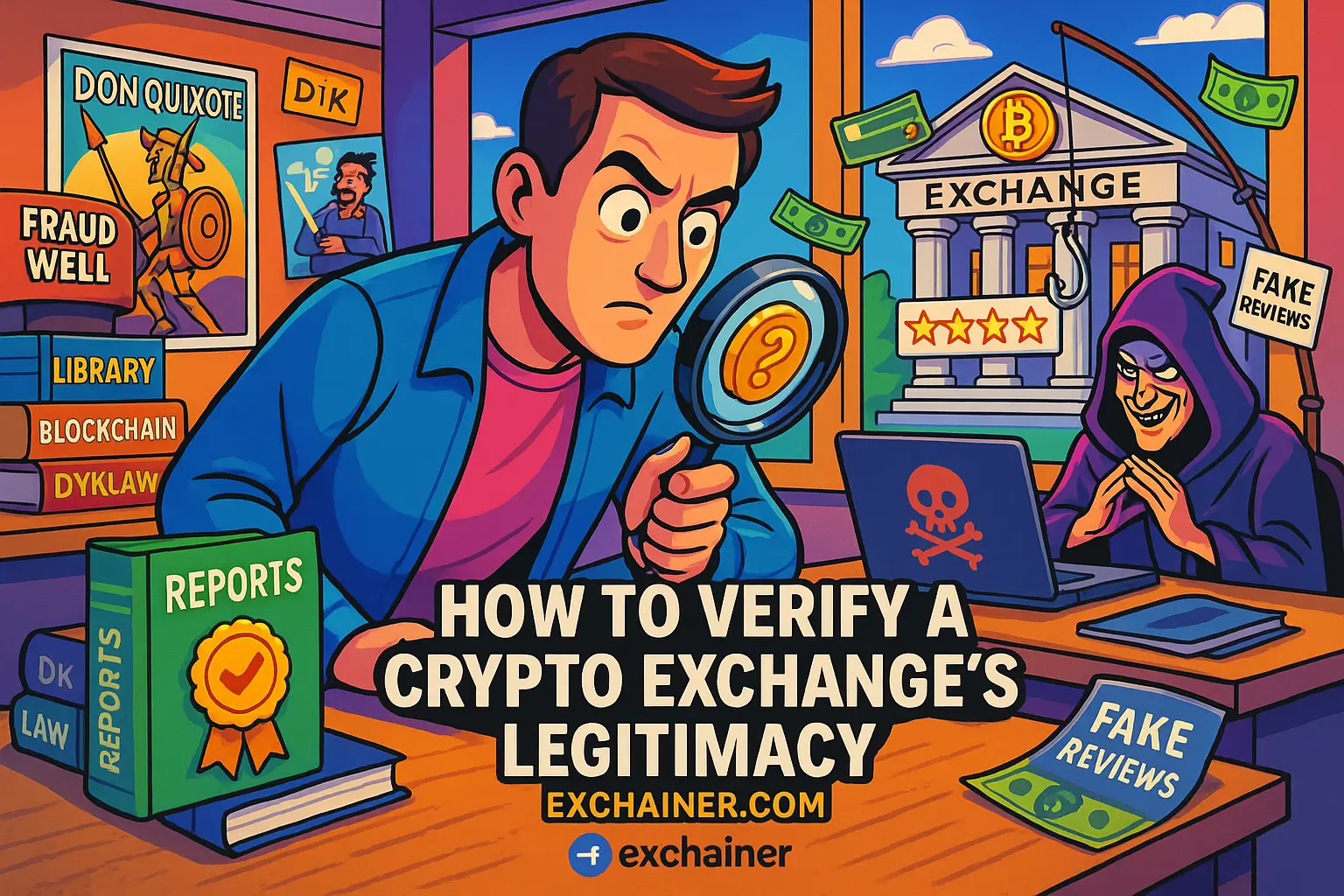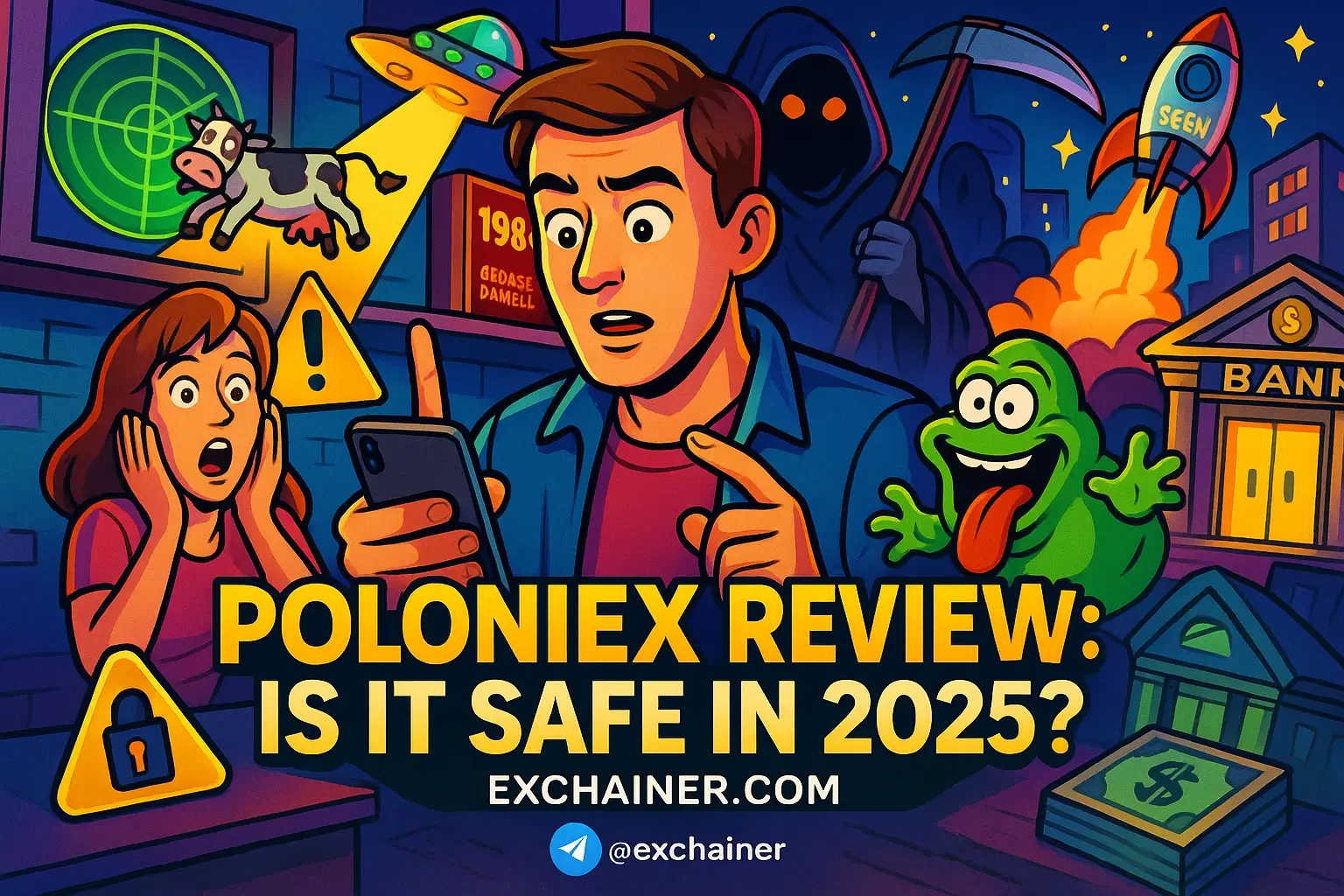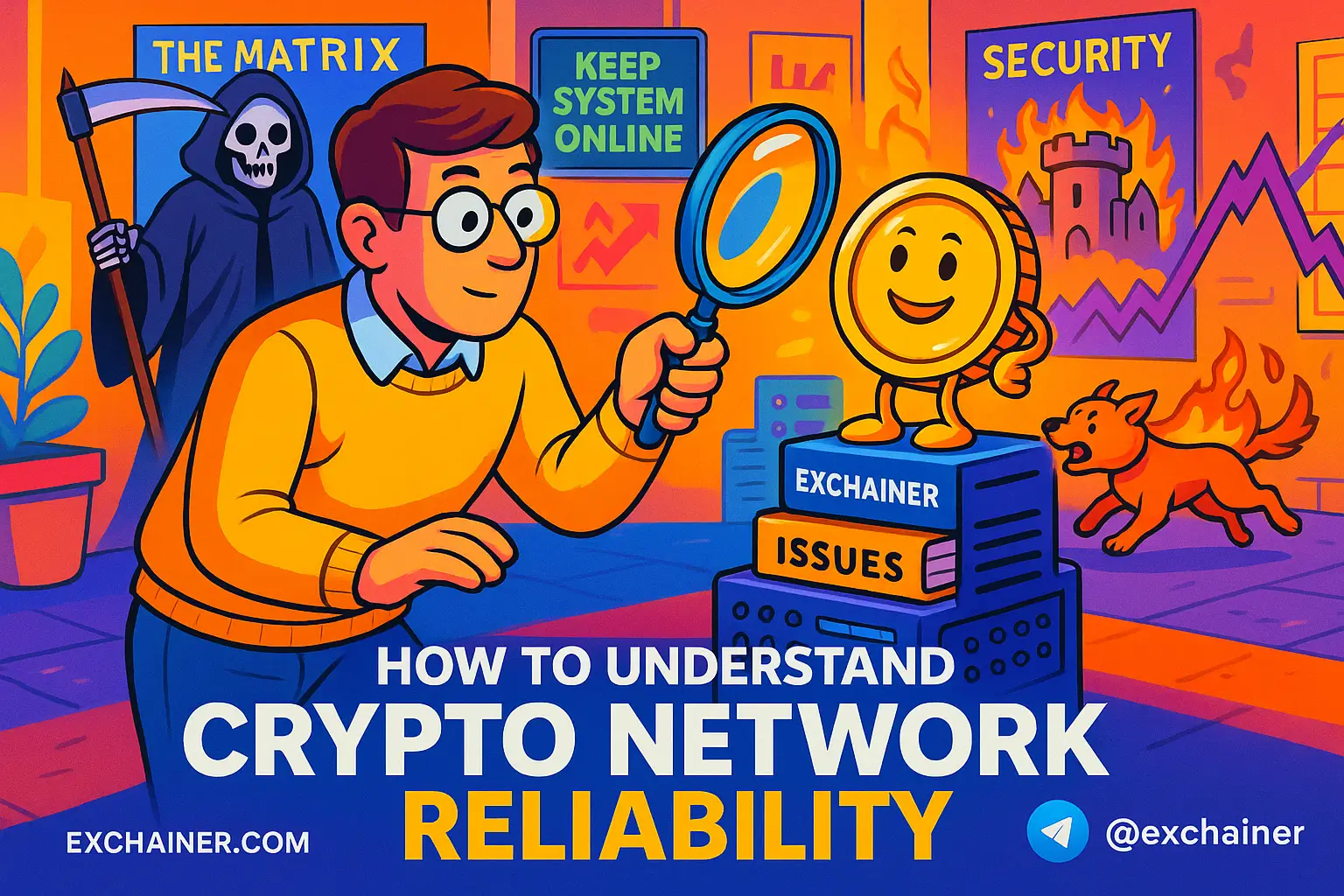Introduction
Imagine scrolling through your favorite crypto forum only to spot an exchange promising eye-popping yields backed by “next-level” technology. Tempting, right? But friends, before you jump in headfirst, you need to know how to verify a crypto exchange’s legitimacy. With so many platforms popping up daily, the risk of falling for a scam or entrusting your hard-earned money to a shady operator is real. This article is your friend in the fight for safe trading—a practical guide to help you separate the wheat from the chaff so your funds stay secure.
Understanding what makes an exchange legitimate isn’t just about flashy graphics or gushing reviews; legitimacy covers a broad spectrum. From proper regulation and transparent fee structures to technical security and solid reputation — all these play critical roles. Trusting an exchange blindly can lead to frozen accounts, unexplained fees, or worse, losing your funds forever.
Whether you’re a newbie trader wanting to dip your toes into digital currency or a seasoned investor seeking safer shores, this guide walks you through exactly how to verify a crypto exchange’s legitimacy. We’ll cover actionable steps, from checking licenses and security features to smart ways of scanning reviews and spotting red flags. You’ll also find handy verification tools, plus a quick checklist at the end that you can use every time you consider a new platform.
Crypto exchange safety doesn’t have to feel like rocket science. With the right know-how, you can trade confidently, protect your assets, and steer clear of scams. If you’d like to brush up on general crypto security basics, visit our Crypto 101 category. Let’s dive in together and build your trust radar — one smart verification at a time.
Check Regulation & Licenses
Verify licensing and registrations
One of the first steps when figuring out how to verify a crypto exchange’s legitimacy is examining its regulatory status. Legitimate crypto platforms usually highlight their licenses somewhere on their website, often in the footer or an “About Us” section. But don’t just take their word for it—cross-check those licenses with official databases. For example, if an exchange claims to be licensed by the UK’s Financial Conduct Authority (FCA), you can search the FCA’s register for the company. Similarly, Swiss platforms regulated by FINMA (Swiss Financial Market Supervisory Authority) or US-based exchanges under SEC or state regulators can be verified publicly.
Remember, there’s a difference between an exchange that is registered as a corporate entity, one licensed to operate specifically as a crypto exchange, and one fully compliant with financial regulations. Being incorporated only means the business exists legally; it doesn’t guarantee customer fund protection or compliance. A valid license generally means the exchange meets certain standards around security, capital requirements, and operational transparency.
Jurisdiction and legal protections
Where an exchange is based matters big time. Jurisdiction affects what consumer protections are in place, how disputes are handled, and the overall risk of fund seizure or freezes. For instance, exchanges in the US, Europe, or Japan usually have stringent Know Your Customer (KYC) and Anti-Money Laundering (AML) regulations. This can be reassuring, especially if issues arise down the line.
Offshore exchanges might have looser rules, offering privacy with fewer hurdles, but also potentially exposing you to additional risks. Lack of enforceable legal protections is a major downside here. When verifying a platform, ask yourself if you’re comfortable relying on the laws of that country — and if the exchange's legal disclosures explain this clearly.
Compliance disclosures and transparency
A legit exchange rarely shies away from publicly showing how it complies with regulations. Check if they publish their AML/KYC policies and whether they’re updated regularly. Vague phrases like “we comply with all laws” without specifics are a warning sign. Transparency shows confidence and respect for users — it also means that if problems arise, you’ll have some legal footing.
Look for links to regulatory filings or clear statements about user protection. In summary, a regulated and transparent exchange significantly lowers your risk compared to a platform operating in the shadows.
Evaluate Security Features
Custody model and asset storage
Security is the fortress protecting your cryptocurrency. Start by understanding how the exchange stores your funds. “Custody” refers to who holds the crypto — you or the platform. Most exchanges hold assets in their wallets, which are hot wallets (connected online for instant trades) or cold wallets (offline storage for safety). Cold storage is the gold standard for risk reduction since it’s immune to online hacks.
Some advanced exchanges provide “proof of reserves,” a cryptographic method showing that the platform truly holds the customer assets it claims. When verifying a crypto exchange’s legitimacy, look for such proofs or transparency reports that detail the exact holdings.
Technical security measures
A trustworthy platform implements multiple layers of defense. Multi-signature wallets require multiple approvals for transactions, making unauthorized fund withdrawals tougher. Two-factor authentication (2FA) should be mandatory on logins and withdrawals — think of it as a double lock on your front door.
Other features to note: withdrawal address whitelisting prevents withdrawals to unknown wallets, and encryption standards guard your personal data. Certifications like SOC 2 or ISO 27001 reflect adherence to professional security practices, another reassurance tip.
Audit, insurance & bug bounty programs
Third-party audits provide an external review of an exchange’s security posture. Public audit reports are more trustworthy than claims alone. Some exchanges carry insurance policies protecting users in case of hacks, though these often come with limits and exclusions.
Bug bounty programs reveal an active security stance — the platform incentivizes white-hat hackers to find vulnerabilities before bad actors do. So, if you spot an exchange running a bug bounty or regularly publishing audit outcomes, it’s a definite plus on the trust scale.
Assess Reputation & User Reviews
Community feedback and review aggregation
Want to know how real users feel? Jump into public forums like Reddit or Twitter (now X), and specialized crypto platforms like Trustpilot. Look beyond the noise and identify recurring patterns in feedback rather than isolated complaints. Some negativity is inevitable, but if users frequently report withdrawal delays, frozen accounts, or poor communication, consider it a warning.
Crypto exchange reputation check isn’t just about star ratings. It’s how the platform reacts to issues — do they fix bugs and respond transparently?
Media coverage and industry recognition
Has the exchange been featured in credible crypto news outlets? Positive press coverage, partnerships with respected projects, or listings on renowned aggregators like CoinMarketCap strengthen credibility. Industry awards or known integrations, such as custody partnerships with big players, add another layer of assurance.
Customer support quality and dispute resolution
Try contacting support with questions before you deposit. Quick, knowledgeable responses mean the exchange values its users. Look for documented examples of how the platform resolves disputes—is it prompt and fair or dodgy and slow? Checking if the exchange has faced any regulatory enforcement actions or court cases is another way to gauge reliability.
Review Fees, Liquidity & Transparency
Fee structure and hidden costs
How an exchange structures fees can tell you a lot about its honesty. Check for clear maker and taker fees, withdrawal charges, deposit fees, and spreads (the difference between buy and sell prices). Hidden fees sneak up on traders and eat into profits silently.
Calculating the real cost of trading helps you avoid surprises. For example, a low trading fee might hide high withdrawal charges. Transparent exchanges lay out every fee clearly, allowing you to plan trades efficiently.
Liquidity and market integrity
Liquidity is crucial for smooth trading. Check the order book depth and compare quoted trading volumes to actual volume reported on independent trackers. Shallow liquidity means your trades may move the market prices, causing slippage.
Be wary of “wash trading” — when exchanges or bots artificially inflate volumes to attract users. This undermines market integrity and raises red flags in a crypto exchange fees transparency review.
Business model and financial transparency
Some exchanges openly share financial reports or proof-of-reserves. Knowing whether the platform is profitable, backed by strong investors, or just a recently launched startup with little disclosure could influence your trust.
Transparency about funding and ownership mitigates risks linked to sudden shutdowns or insolvency.
Spot Red Flags & Perform Due Diligence
Immediate warning signs
Avoid exchanges with no verifiable physical address or team information. Unrealistic promises of guaranteed returns or high-yield bonuses should set off alarm bells. Anonymous founders or poorly managed Know Your Customer (KYC) procedures are common scam markers.
Deeper due diligence steps
Go a bit Sherlock Holmes here. Check the domain WHOIS history to see if the website has been stable or recently created. Browse GitHub repositories if they are open source — is the code actively maintained? Corporate registries can reveal if the company behind the exchange is genuine. If possible, perform background checks on listed executives.
Quick verification checklist to use before depositing
Before you part with your crypto, go through these quick checks:
1. Lookup the exchange on relevant regulator sites.
2. Confirm the presence of strong security features (2FA, cold storage).
3. Read multiple, balanced user reviews.
4. Perform a small test deposit and withdrawal.
5. Check for audit reports or proof-of-reserves publications.
6. Contact customer support with a question.
7. Review fee schedules closely.
8. Verify domain age and ownership.
9. Ensure the exchange operates from a favorable jurisdiction.
10. Confirm no outstanding legal issues or enforcement actions.
This simple checklist can reduce your risk significantly.
Conclusion
When it comes to cryptocurrency, knowing how to verify a crypto exchange’s legitimacy should be one of your top priorities. To recap, there are five pillars you need to keep an eye on: regulation, security, reputation, fee transparency and liquidity, and most importantly, spotting red flags through due diligence.
Start with quick, time-friendly checks that include regulator lookups and testing customer support responsiveness. If you’re looking to deepen your assessment, audit reports, proof-of-reserves, and domain history provide valuable insights. For large deposits, a full due diligence routine including background checks on executives and corporate registrations is highly advisable.
Risk management is key. Avoid putting all your eggs in one basket—diversify across trustworthy exchanges and consider self-custody using hardware wallets for long-term holdings. Remember, no exchange is 100% risk-free; insurance policies can mitigate losses but often come with limits.
To help you on your journey, take advantage of online regulator lookup tools, proof-of-reserves aggregators, community forums, and security audit databases. If you want a handy companion, download a crypto exchange verification checklist to use anytime.
As the renowned investor Warren Buffett once said, “Risk comes from not knowing what you’re doing.”
Equip yourself with knowledge and make wise choices — that’s the secret to safer crypto trading.
Want to learn more? Check out these sections on Crypto 101, read detailed Exchange Reviews, and discover best security practices in Tools and Wallets. Happy trading!






